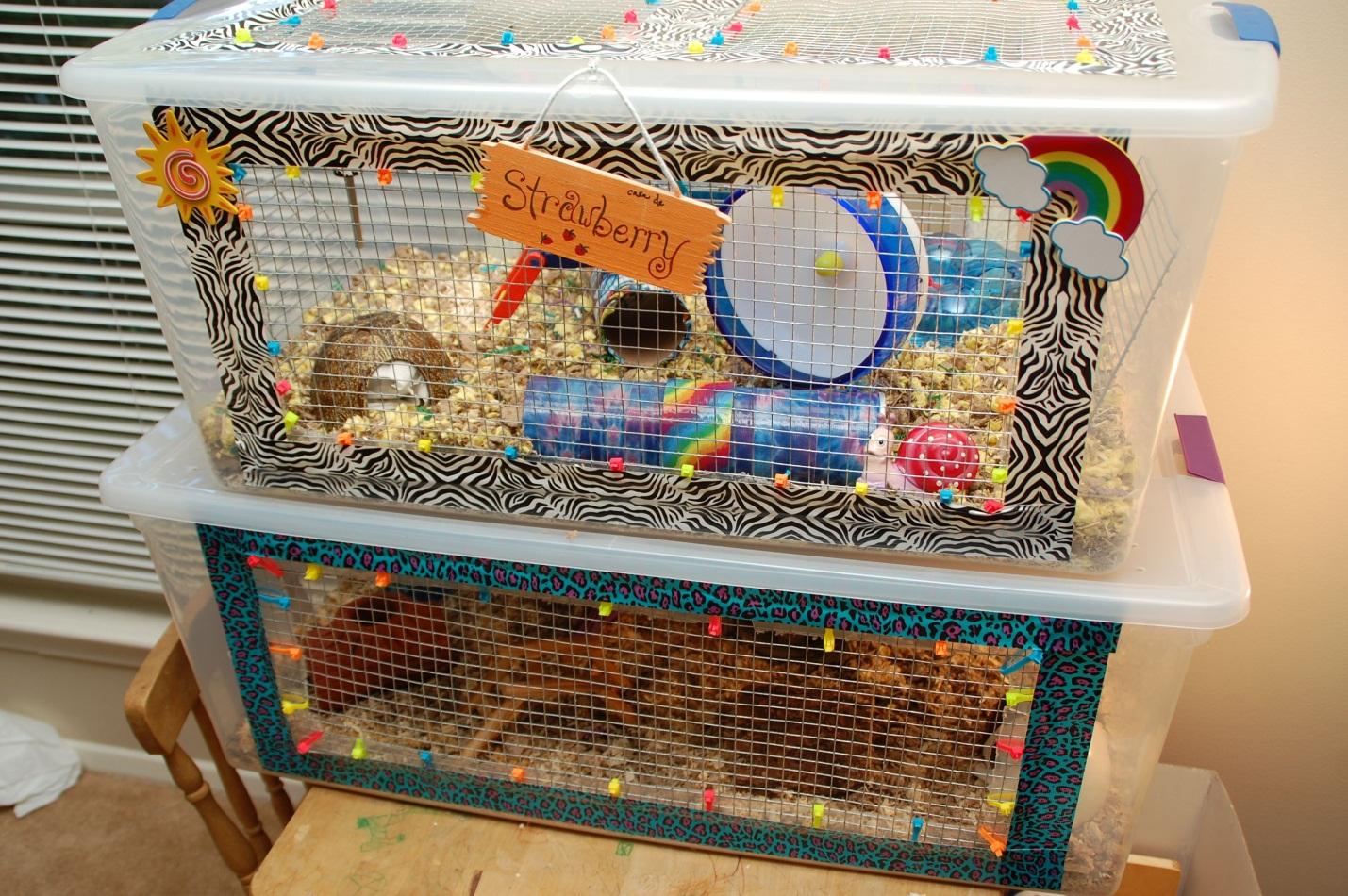Health & Care
Guinea Pig Habitat Ideas Creating the Perfect Home for Your Furry Friend
Guinea pigs are popular pets known for their adorable looks and gentle nature. As responsible pet owners, it’s important to provide them with a suitable habitat that meets their needs and keeps them happy and healthy. With so many options available, it can be overwhelming to decide on the best habitat for your guinea pig. In this article, we’ll explore some creative and practical ideas for setting up a guinea pig habitat that will make both you and your furry friend happy.
Seemore: Can Guinea Pigs Eat Zucchini? – Health Benefits And Drawbacks
Contents
1. Choosing the Right Cage for Your Guinea Pig

Subheadings:
- Size Matters: The Importance of Cage Dimensions
- Types of Cages: Pros and Cons
- Maintaining a Clean and Comfortable Environment
Guinea pigs need adequate space to move around and exercise in order to stay physically and mentally healthy. When it comes to cage size, bigger is always better. The minimum recommended size for one or two guinea pigs is 7.5 square feet, but providing a larger space is ideal. It’s also important to consider the dimensions of the cage, as guinea pigs love to run, jump, and explore. A tall cage with multiple levels is a great option, as it allows for vertical movement and adds more living space.
There are various types of cages available, each with their own advantages and disadvantages. Some common options include wire cages, plastic cages, and homemade cages. Wire cages are affordable and provide good ventilation, but they may require additional bedding to protect your guinea pig’s feet from the wires. Plastic cages are easy to clean and come in different sizes and shapes, but they may not provide enough ventilation. Homemade cages can be customized to fit your guinea pig’s needs, but they require more effort and materials to build.
Regular cleaning and maintenance are crucial for keeping your guinea pig’s habitat comfortable and hygienic. Weekly spot cleaning and a thorough cage cleaning every two weeks should suffice. Use a pet-safe cleaner and avoid using harsh chemicals. It’s also important to provide fresh bedding, such as wood shavings or paper-based bedding, for your guinea pig to burrow and nest in.
2. Creating a Fun and Stimulating Environment
Subheadings:
- The Importance of Enrichment for Guinea Pigs
- DIY Toys and Activities
- Safe and Healthy Snacks to Add Variety to Your Guinea Pig’s Diet
Guinea pigs are curious and intelligent creatures that need mental stimulation to prevent boredom and health problems. Adding toys and activities to their habitat is a great way to keep them entertained and engaged. Some simple DIY ideas include making tunnels out of cardboard boxes, providing chew toys made from safe materials like untreated wood, and creating a digging box filled with hay or shredded paper.
Aside from toys, offering a variety of healthy snacks can also add excitement to your guinea pig’s daily routine. Vegetables like carrots, bell peppers, and leafy greens are great options. You can also provide occasional fruits like apples or berries as treats. Just be sure to introduce new foods gradually and in small portions to prevent digestive issues.
3. Designing a Cozy and Comfortable Living Space

Subheadings:
- Choosing the Right Bedding for Your Guinea Pig
- Temperature and Humidity Considerations
- Adding Hiding Spots and Resting Areas
Bedding plays an essential role in providing comfort and maintaining hygiene in your guinea pig’s habitat. There are various options available, but some popular choices include wood shavings, paper-based bedding, and fleece liners. Wood shavings are absorbent and inexpensive, but they may cause respiratory irritation in some guinea pigs. Paper-based bedding is dust-free and safe, but it can get expensive. Fleece liners are reusable and soft, but they require frequent washing.
Guinea pigs are sensitive to extreme temperatures and humidity, so it’s important to keep their habitat in a suitable range. Ideally, the temperature should be between 65-75°F (18-24°C), and the humidity level should be around 40-60%. Placing the cage away from direct sunlight and drafts can help maintain a comfortable environment.
In addition, guinea pigs need places to hide and rest when they feel stressed or tired. You can provide hiding spots with commercial hideouts or create DIY ones using cardboard boxes. Adding cozy bedding such as fleece or hay inside these hideouts can make them even more inviting for your furry friend.
4. Enriching Your Guinea Pig’s Habitat with Natural Elements

Subheadings:
- The Benefits of Adding Plants to Your Guinea Pig’s Habitat
- Choosing Safe and Edible Plants
- Tips for Maintaining Indoor Plants
Adding live plants to your guinea pig’s habitat is not only aesthetically pleasing but also beneficial for their well-being. Plants provide mental stimulation, improve air quality, and add variety to their diet. Some safe and edible options include wheatgrass, herbs like basil and cilantro, and vegetables like lettuce and dandelion greens. Just be sure to research each plant’s toxicity and consult with a veterinarian before adding them to your guinea pig’s habitat.
Maintaining indoor plants can be challenging, especially with curious guinea pigs nibbling on them. To prevent any accidents, make sure to use pet-safe, organic fertilizers and keep toxic chemicals out of reach. You can also add a protective barrier around the plants or hang them from the ceiling to keep them out of your guinea pig’s reach.
5. Considering Multi-Pig Habitats

Subheadings:
- How Many Guinea Pigs Can Live Together?
- Pros and Cons of Group Housing
- Tips for Introducing New Guinea Pigs
Guinea pigs are social animals and thrive in groups. While it’s possible to keep a single guinea pig, providing them with a companion can greatly improve their quality of life. When considering multi-pig habitats, it’s important to remember that the recommended cage size will increase with each additional guinea pig. It’s also essential to introduce new guinea pigs gradually and carefully, as they may not get along immediately.
There are pros and cons to group housing. On the positive side, multiple guinea pigs can provide companionship and mental stimulation for each other, which can lead to a happier and healthier life. However, there is also a risk of aggression and dominance behaviors when introducing new guinea pigs, so proper supervision and monitoring is necessary.
FAQs about Guinea Pig Habitats
Subheadings:
- What is the Best Type of Cage for a Guinea Pig?
- Can I Keep My Guinea Pig in a Hamster Cage?
- How Often Should I Clean My Guinea Pig’s Cage?
- Do Guinea Pigs Need Toys?
- Can I Use Cat Litter or Cedar Shavings as Bedding for My Guinea Pig?
What is the Best Type of Cage for a Guinea Pig? The best type of cage for a guinea pig is one that provides enough space for movement and exercise, good ventilation, and easy maintenance. Wire cages, plastic cages, and homemade cages all have their advantages and disadvantages, so choose the one that suits your guinea pig’s needs and your budget.
Can I Keep My Guinea Pig in a Hamster Cage? No, hamster cages are too small for guinea pigs and do not provide adequate space for them to move around and exercise. Guinea pigs need at least 7.5 square feet of space, while hamsters only need 2 square feet. It’s important to provide a cage that meets the size requirements for your guinea pig’s well-being.
How Often Should I Clean My Guinea Pig’s Cage? It’s recommended to spot clean your guinea pig’s cage daily and do a thorough cleaning every two weeks. Regular cleaning and maintenance are essential for keeping their habitat hygienic and comfortable. Make sure to use a pet-safe cleaner and avoid harsh chemicals.
Do Guinea Pigs Need Toys? Yes, toys and activities are important for keeping your guinea pig mentally stimulated and preventing boredom. Simple DIY ideas like cardboard tunnels, chew toys, and digging boxes can be great options. You can also rotate toys to keep things interesting for your furry friend.
Can I Use Cat Litter or Cedar Shavings as Bedding for My Guinea Pig? No, cat litter and cedar shavings are not suitable for guinea pigs. Cat litter can be harmful if ingested, and cedar shavings contain oils that can cause respiratory irritation. It’s best to stick to safe bedding options like wood shavings, paper-based bedding, or fleece liners.
Conclusion

Providing a suitable habitat for your guinea pig is essential for their health and well-being. By following these ideas and tips, you can create a comfortable, stimulating, and safe home for your furry friend to thrive in. Remember to always prioritize their needs and consult with a veterinarian for any concerns or questions about your guinea pig’s habitat. With a little effort and creativity, you can create the perfect home for your beloved pet.
